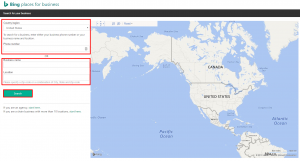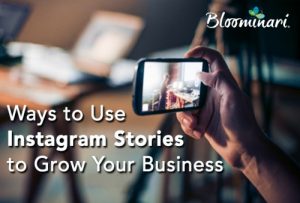I remember little from “Genetics and Evolution 101” in the way of genealogy, heredity, or how the homo sapien has biologically progressed. Yet I learned a miraculous amount about how our society is programmed.
My professor got the big picture. Though he dulled the rest of the class to sleep every class (and I often found myself drifting too), the man was smart. The type of guy I wish I had got to know even better. We had a sort of implicit connection that often led to post-class discussion on a multitude of topics that impacted reality. The problem with the class was the material. It was dry and coarse and lifeless.
One day he pulled me aside after the rest of the class has awoken from their collective slumber and quickly filed out.
“I don’t understand why everyone looks so lifeless out there, I feel like I’m talking to a sea of zombies. Any idea what’s going on?”
He went on to tell me that he counted the number of students he saw on phones during class. Let’s suffice to say that if he enforced his rule of no-texting-during-class-or-you’re-out, there wouldn’t have been any class to teach.
The truth was that most of the students were taking Genetics & Evolution as a required course and were willing only to exert as little effort as possible in order to pass. He was looking for some deeper insight from me. He wanted me to tell him how to be interesting.
This was a tall task–connecting apathetic students with boring subject matter with, in my peer’s eyes, a pompous professor. I don’t remember what I told him now. What he needed was not to reach us as students, but to connect with us as people. It got me thinking about my generation and what we’re after. Sure, the boring class didn’t help. But the reason people were on their phones in class wasn’t so much caused by the subject matter as it was by the societal shift to a reliance on mobile technology we’re experiencing.
Generation Y and Z are fundamentally different than any other group in history in the way they consume and prefer to interact. And you’ll find a hundred different blogs spewing statistics aimed to provide factual support for this claim. What you’ll be more hard-pressed to find is an explanation as to why this “phone phenomena” is permeating and overtaking our society as a whole. So here’s my take on the 18-24 persona, albeit an opinionated and subjective one.
The mobile device is the main way “we” choose to interact. Frankly, we’re generally lazy and find meaningful interpersonal interaction intimidating. The phone is easy.
Walk around any college campus and do a quick count of how many people you see on their phones while walking. Then count how many times you see two passing people say hello or wave or offer so much as a nonchalant acknowledgement. It’s a lost art. I have no hard data on this, so don’t quote me, but the following seem to be occurring at an almost alarmingly comical rate:
- People physically running into objects due to phone hypnosis.
- People who choose to congregate together, yet somehow all silently captivated by their phones.
- People using texting, email and social media to connect in the place of traditional communication.
Our generation has come to rely on mobile technology as a distraction—an easy opt out at any hint of a tense situation. Something to say “Look, I have something going on down here, something requiring my attention. Something interesting. More interesting than you. Someone else. Something else. Something that can ease the potential awkwardness that lies just ahead.”
Our brains have a lot to do with it. My genetics prof could likely elaborate on this better than I can. Recent research on rats showed that when dopamine neurons were cut in the brain, the rats starved to death even when food was in front of them. That’s because dopamine causes us to anticipate and seek out reward, pleasure, and gratification. Our phones are an addiction as strong as a drug.
This chemical is intensified in humans, especially when we’re used to engaging in behavior that has potential for gratification and has worked in the past. And we seek it instantly. Unpredictability also intensifies the feeling—whoever invented the “notification” is a digital marketing genius. Without serious self-control, most people can’t resist the urge to check the phone when their screen lights up with something new. The brain lights up, too, seeking that connection and affirmation, usually in the form of a like, follow, retweet, etc.
We don’t post to Instagram or Facebook so others can make a scrapbook of our daily doings. We don’t do it so people can learn about our lives. Psychologists and experienced digital marketers would argue we post for gratification that comes with a ‘like.’ We do it because it provides recognition by others, some degree of certainty that you’ll get ‘likes’, some sense of normalcy in an otherwise unpredictable, random, scary world.
I’ll use Apple as an easy example, not only because you know them, but because they own the majority of the mobile market. Apple has taken advantage of this very natural human phenomena and has leveraged business strategy to match. Apple recently eclipsed 500 million iPhones sold. But that doesn’t explain the addiction to the iPhone. If it’s gratification we seek, the advent of apps is truly what changed the mobile landscape. The more apps one has, the more chance they’ll interact. The more distractions and chance for affirmation in whatever form. Apple recently measured 50 billion app downloads. It’s no wonder people are always checking their phones.
This relates to marketing and customer relationships. Three things will begin to separate successful brands from boring ones in todays landscape where young customers classify content based only on whether it’s sharable or boring:
1) The promise of an emotional, authentic experience.
2) Providing a simple, clear solution to everyday problems.
3) Brands that integrate both of these ideas with a mobile strategy will dominate.
There’s one thing my generation fears above all else. Awkwardness. The iPhone provides a direct, accessible outlet to momentarily remedy this in any setting. And mobile usage is increasing. I can not imagine what this landscape will look like in 10, 20, or 50 years when I’m that old geezer my grandchildren will make fun of for having used an iPhone or Facebook or a desktop computer.
Digital & Social Articles on Business 2 Community
(307)



